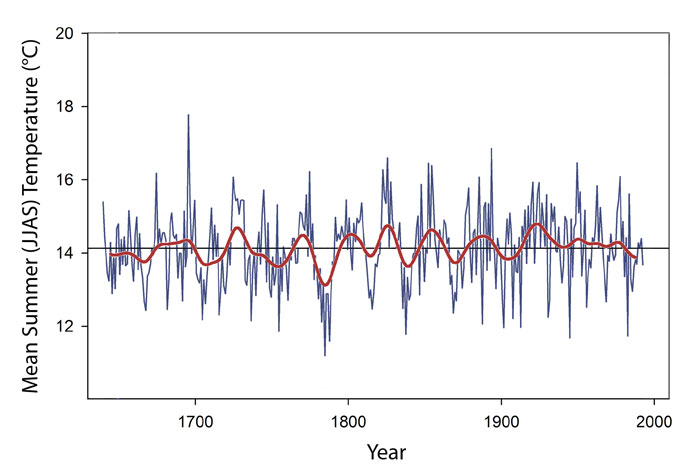| Tweet | Follow @co2science |
Paper Reviewed
D'Arrigo, R., Wilson, R., Wiles, G., Anchukaitis, K., Solomina, O., Davi, N., Deser, C. and Dolgova, E. 2015. Tree-ring reconstructed temperature index for coastal northern Japan: Implications for western North Pacific variability. International Journal of Climatology 35: 3713-3720.
Writing as background for their work, D'Arrigo et al. (2015) state that "longer time series, gleaned from precisely dated paleoclimatic records, can aid considerably in understanding the basic mechanisms that drive climate variability across the North Pacific, particularly on time scales beyond those resolvable in the instrumental record." Furthermore, such series are of significant importance in helping to discern whether or not modern increases in greenhouse gases over the past century are significantly impacting Earth's climate.
As their contribution to the subject, D'Arrigo et al. utilized a network of tree-ring chronologies from the Russian Far East and Japan to reconstruct summer (June-September) air temperatures for coastal northern Japan over the past four centuries. The resultant series is presented in the figure below, revealing annual to multidecadal variability in the climate of this region that was found to be significantly correlated with six North Pacific atmosphere-ocean circulation indices. And additional analyses reveal significant spectral periodicities in the reconstructed temperature data centered at around 28, 18, and 4 years, which are likely the product of natural climatic fluctuations such as ENSO and the Pacific Decadal Oscillation.
However, perhaps the most important finding of this study (and which was not discussed by the authors) is a lack of long-term warming, particularly during the late 20th century when greenhouse gas emissions were highest. Despite the incessant cry of climate alarmists that temperatures are rising to unprecedented levels due to increased concentrations of CO2 in the atmosphere, temperatures in the northern coastal region of Japan have remained relatively stable over the past four centuries. Indeed, there is nothing unusual, unnatural or unprecedented about temperatures there over the past few decades. In fact, as evidenced by the 28-year spline function fit to the data (red line, figure below), temperatures over the past several decades reveal a general cooling trend, and there have been multiple periods during the past four centuries when temperatures were warmer than the present. And these are findings of which climate alarmists should take note!

Reconstructed June-September temperature for the region of Nemuro, Japan (blue line) based on western North Pacific tree rings over the period 1640-1993. Smoothed red line is a 28-year spline function of the reconstructed temperatures. Adapted from D'Arrigo et al. (2015).




